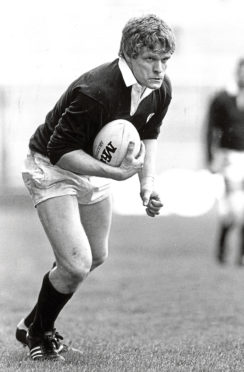It was one of the most controversial incidents of the 1991 World Cup: the high shoulder tackle on Irish full-back Jim Staples by Scotland flanker Finlay Calder in the group decider at Murrayfield.
Calder later admitted it was a tough challenge, while critics – particularly from across the Irish Sea – described it as “brutal” and “X-certificate”.
When the collision happened Scotland were losing 15-9. Thereafter, they regained the initiative and won 24-15.
It became part of a familiar story for the rest of the 1990s and there are lessons for Gregor Townsend’s side as they prepare to meet Joe Schmidt’s Ireland – ranked No 1 in the IRB standings on Sunday.
The most obvious factor is that in the days of Calder – and Craig Chalmers, John Jeffrey, Gary Armstrong and the Hastings brothers – the Scots knew how to play to the very edge of legality, and occasionally overstepped it en route to the semi-finals of the 1991 global competition.
They got in opponents’ faces, treated the concept of offside as if it didn’t exist, and recognised the importance of sending rivals into reverse gear.
In many cases these tactics worked, and especially against Ireland. Chalmers met them 12 times during the decade and only lost once.
It used to be the Scots who intimidated and beat up their Celtic cousins with a streetwise, take-no-prisoners level of physicality.
Yet, ever since the start of the millennium the pendulum has shifted.
However, I believe the Scots can upset the odds if they show the same terrier-like aggression and unstinting foraging at the breakdown as was second nature to Calder and Co.
Ryan Wilson and Hamish Watson are key figures in the looming clash. The former has proved many times for Glasgow that he can mix it with Munster’s best and Leinster’s finest.
Watson, meanwhile, is a little coiled spring of tireless activity who has to highlight the fact that Ireland’s pack, regardless of its qualities, is not exactly in the first flush of youth.
Sunday is a must-win contest and the Scots have to view it as a cup final at the start of the event. Calder himself says: “Scotland can’t afford just to play OK. They have to go out there as if their lives depend on it.”
